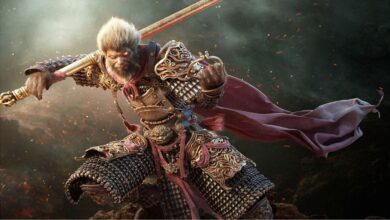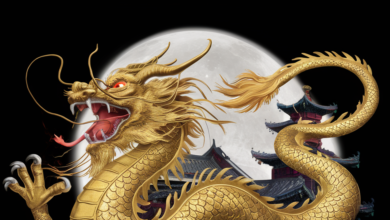
Chinese New Year: A Cultural Extravaganza

Chinese New Year is an extravagant celebration steeped in rich cultural traditions. This vibrant festival, also known as the Spring Festival, is deeply rooted in Chinese culture and is regarded as one of the most significant events of the year. Celebrated by Chinese communities around the world, this annual extravaganza brings people together to honor their ancestors, bid farewell to the past, and welcome a new beginning.
At the heart of Chinese New Year festivities is the practice of paying respects to ancestors and deities. Families gather to offer prayers and make offerings at temples and ancestral altars. This time-honored tradition is believed to bring blessings and good fortune for the upcoming year. In addition to religious rituals, the Chinese New Year is characterized by lively parades, colorful costumes, traditional music, and breathtaking firework displays. The streets come alive with the captivating sights and sounds of dragon dances, lion performances, and acrobatic shows, creating a sensory feast for all who partake in this cultural extravaganza.
History of Chinese New Year Celebrations
Chinese New Year, also known as the Spring Festival, is a traditional Chinese holiday with a history that dates back thousands of years. The exact origins of Chinese New Year are not known, but it is believed to have started during the Shang Dynasty (1600-1046 BC) as a way to celebrate the end of winter and the beginning of a new agricultural cycle. Over the centuries, the celebration evolved and incorporated various cultural and religious elements, making it one of the most important and widely observed festivals in China and other parts of the world.
Throughout its long history, Chinese New Year has undergone numerous changes and adaptations. For example, during the Han Dynasty (206 BC-220 AD), the festival became an occasion to honor deities and ancestors, with elaborate ceremonies and temple visits. The traditions surrounding Chinese New Year also expanded to include activities such as lion and dragon dances, firecrackers, and the burning of incense for good luck. These customs have been passed down through generations, helping to preserve the rich cultural heritage of Chinese New Year celebrations.
Significance of Chinese Zodiac Signs

The Chinese zodiac signs play a significant role in Chinese culture and traditions. Based on a 12-year cycle, each zodiac sign is represented by an animal and is believed to influence a person’s personality, characteristics, and destiny. Each year is associated with one of the zodiac animals and is believed to have its own unique qualities and attributes. People often refer to their zodiac sign to gain insights into their compatibility with others, make important decisions, or understand their life’s path.
The Chinese zodiac signs are not only used to determine individual traits but also to forecast the overall energy and atmosphere of a particular year. It is widely believed that the zodiac animal of the year can influence the events and energies that prevail during that time. For instance, the Year of the Rat is associated with wealth and abundance, while the Year of the Dragon is believed to bring good fortune and success. People often consult horoscopes and astrologers to gain insights into what the upcoming year may hold for them based on their zodiac sign.
Preparations for Chinese New Year: Cleaning and Decorating
The preparations for Chinese New Year are an essential part of the celebration, as they symbolize the removal of bad luck and the welcoming of good fortune. One of the significant traditions is the thorough cleaning of homes and spaces before the arrival of the new year. This deep cleaning is believed to sweep away any lingering bad luck from the past year and make room for positive energy and blessings. Families meticulously clean every nook and cranny of their houses, from the floors and windows to the furniture and decorations. It is a time-consuming process but is considered necessary to start the new year with a fresh and pristine environment.

In addition to cleaning, decorating homes with auspicious symbols and vibrant red colors is another vital aspect of the preparations. Red is believed to bring good luck and ward off evil spirits, so it is prominently featured in Chinese New Year decorations. Red lanterns are hung outside houses, and red couplets with meaningful phrases are posted on doorways. Delicate paper cuttings with intricate designs depicting prosperity and good fortune are also pasted on windows. These decorations not only add a festive atmosphere but also serve as symbolic elements that attract positive energy and blessings into the home. The entire process of cleaning and decorating is a family affair, bringing everyone together to participate in the collective efforts and to eagerly anticipate the arrival of Chinese New Year.
Traditional Chinese New Year Food: A Feast for the Senses

One of the highlights of Chinese New Year celebrations is the abundance of delectable traditional food. From dumplings to fish, every dish holds a special significance and is guaranteed to tantalize your taste buds. Steamed fish, symbolizing prosperity and abundance, is a must-have during the festive season. The Chinese word for fish, «yu,» sounds similar to the word for surplus or abundance, making it a popular dish to ensure a year filled with good fortune. Another staple dish is dumplings, which are believed to bring wealth and luck due to their resemblance to gold ingots. Filled with various ingredients such as pork, shrimp, and cabbage, these little pockets of deliciousness are often enjoyed as a family activity, with everyone participating in the making and devouring of dumplings.
In addition to fish and dumplings, there is an array of other dishes that make up the traditional Chinese New Year feast. Sticky rice cake, or nian gao, symbolizes prosperity and progress. The sticky texture represents unity and sticking together as a family. This sweet and chewy treat is often steamed and served in slices, enjoyed by young and old alike. Another favorite is longevity noodles, which are long and uncut to symbolize a long and prosperous life. These noodles are usually stir-fried with vegetables and meat, creating a mouthwatering dish that is not only delicious but also filled with meaning. Whether it’s the flavors, the symbolism, or the gathering of loved ones around the table, the traditional Chinese New Year food truly is a feast for the senses.
Lucky Red Envelopes: The Symbolism of Money Giving

In Chinese culture, the exchange of lucky red envelopes is an important tradition during the Lunar New Year celebrations. These envelopes, known as «hongbao,» are filled with money and given to children, unmarried adults, and even employees as a gesture of well-wishes and good fortune for the coming year. The act of giving red envelopes symbolizes blessings of luck, prosperity, and happiness.
The significance of red envelopes lies not only in the monetary value within but also in the color red itself. Red is considered an auspicious color in Chinese culture, believed to ward off evil spirits and bring good luck. The giving of red envelopes is seen as an act of sharing wealth and bestowing blessings upon the recipients. It is also a way for elders or employers to show their care and generosity towards the younger generation or employees, fostering a sense of harmony and gratitude within the community.
Fireworks and Dragon Dances: The Spectacular Parades
The highlight of Chinese New Year celebrations is often the spectacular parades featuring fireworks and dragon dances. These vibrant displays captivate audiences with their dazzling colors and energetic movements. Fireworks light up the night sky, creating a mesmerizing visual spectacle that symbolizes the driving away of evil spirits and the welcoming of good fortune for the coming year. The loud bangs and crackles of the fireworks are believed to scare away any lingering negativity, making way for a fresh start and positive beginnings.
Dragon dances, on the other hand, are a traditional art form that dates back centuries in Chinese culture. These intricate dances feature a team of performers manipulating a long dragon made of colorful fabric and supported by poles. The dragon twists, turns, and undulates in a rhythmic manner, symbolizing the spirit of the mythical creature. The lively beat of drums and clashing of cymbals accompany the dragon’s movements, adding to the festive atmosphere. The dragon dance is believed to bring good luck and fortune to communities, as well as chase away evil spirits. The sight of the dragon weaving through the streets creates a sense of awe and excitement, leaving spectators in awe of the ancient traditions that are being showcased.
Family Reunion: The Heart of Chinese New Year Celebrations

Family reunion is at the core of Chinese New Year celebrations, as it is a time when families come together to strengthen relationships and express love and respect for one another. This special occasion allows family members, young and old, to reconnect, reminisce, and create lasting memories. The significance of family during Chinese New Year cannot be overstated, as it symbolizes unity and harmony, and serves as a reminder of the importance of strong familial bonds.
At the heart of the family reunion is the tradition of the New Year’s Eve dinner, known as «Nian Ye Fan.» This extravagant feast brings generations together around a large table filled with sumptuous dishes. The dinner is meticulously prepared with great care and love, showcasing the best culinary skills and traditional recipes. It is a time not only to indulge in delicious food, but also to engage in meaningful conversations, laugh, and share stories. The atmosphere is filled with warmth and happiness, as relatives catch up on each other’s lives and honor their elders. The New Year’s Eve dinner is a cherished moment for Chinese families, as it reinforces the importance of family ties and provides a sense of belonging.
Lantern Festival: The Grand Finale of the Festivities

The Lantern Festival marks the end of the two-week long Chinese New Year celebrations with a grand spectacle of lights, colors, and vibrant lantern displays. This traditional festival is celebrated on the fifteenth day of the first month in the lunar calendar when the full moon shines brightly in the sky. As darkness descends, streets and public spaces are illuminated by a breathtaking array of lanterns in various shapes and sizes, creating a magical ambiance that captivates both young and old.
One of the highlights of the Lantern Festival is the Lantern Riddles, a popular game that adds an element of intellectual challenge to the festivities. Riddles written on slips of paper are attached to the lanterns, and visitors are invited to guess the answers. This adds an element of playful competition as people gather around the lanterns, engaging in lively discussions and debates to solve the riddles. It is an interactive activity that encourages social interaction and provides a joyful sense of community as people come together to celebrate the grand finale of the Chinese New Year festivities.
Celebrating Chinese New Year Around the World

In countries and regions with a significant Chinese diaspora, Chinese New Year is celebrated with great enthusiasm and passion. People from various cultural backgrounds come together to join in the festivities and embrace the rich traditions of this holiday. From bustling dragon parades in New York City’s Chinatown to vibrant fireworks displays in San Francisco, the spirit of Chinese New Year transcends borders and creates a sense of unity and joy among communities around the world.
In Australia, Chinese New Year celebrations take on a multicultural twist, with elaborate street parades, cultural performances, and food festivals. Sydney particularly stands out with its renowned Lunar New Year Festival, attracting both locals and tourists alike. The city comes alive with vibrant decorations, traditional lion dances, and mesmerizing dragon boat races, showcasing the diverse cultural heritage of the Chinese community and fostering a spirit of inclusivity for all Australians. Other countries like Malaysia, Singapore, and Indonesia also participate in the festivities, honoring their Chinese heritage through colorful celebrations, delightful delicacies, and mesmerizing cultural displays.
This 2024, our New Year will begin in 10th February , 2024 and we’ll step into the Dragon’s Year!


